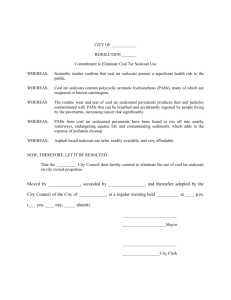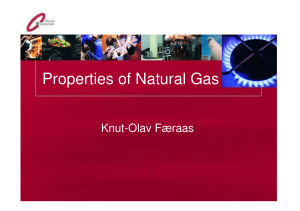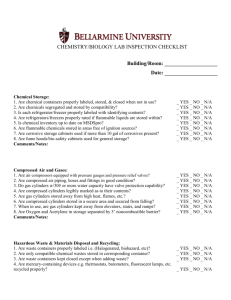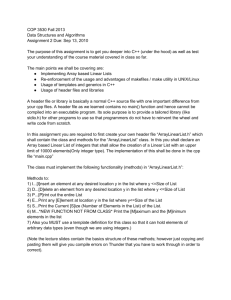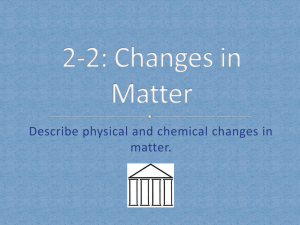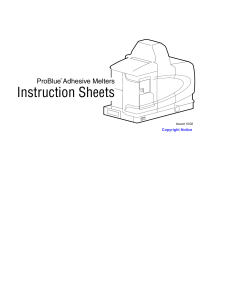Attachment 1 - Fire Safety During Construction, Tar Kettles, and
advertisement
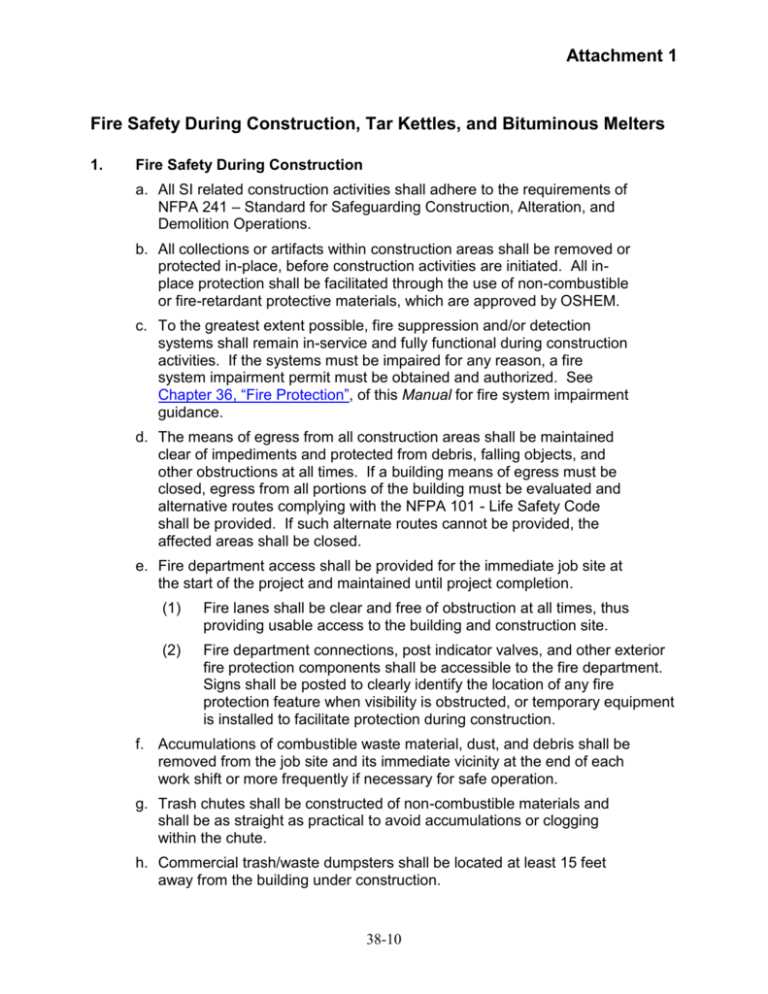
Attachment 1 Fire Safety During Construction, Tar Kettles, and Bituminous Melters 1. Fire Safety During Construction a. All SI related construction activities shall adhere to the requirements of NFPA 241 – Standard for Safeguarding Construction, Alteration, and Demolition Operations. b. All collections or artifacts within construction areas shall be removed or protected in-place, before construction activities are initiated. All inplace protection shall be facilitated through the use of non-combustible or fire-retardant protective materials, which are approved by OSHEM. c. To the greatest extent possible, fire suppression and/or detection systems shall remain in-service and fully functional during construction activities. If the systems must be impaired for any reason, a fire system impairment permit must be obtained and authorized. See Chapter 36, “Fire Protection”, of this Manual for fire system impairment guidance. d. The means of egress from all construction areas shall be maintained clear of impediments and protected from debris, falling objects, and other obstructions at all times. If a building means of egress must be closed, egress from all portions of the building must be evaluated and alternative routes complying with the NFPA 101 - Life Safety Code shall be provided. If such alternate routes cannot be provided, the affected areas shall be closed. e. Fire department access shall be provided for the immediate job site at the start of the project and maintained until project completion. (1) Fire lanes shall be clear and free of obstruction at all times, thus providing usable access to the building and construction site. (2) Fire department connections, post indicator valves, and other exterior fire protection components shall be accessible to the fire department. Signs shall be posted to clearly identify the location of any fire protection feature when visibility is obstructed, or temporary equipment is installed to facilitate protection during construction. f. Accumulations of combustible waste material, dust, and debris shall be removed from the job site and its immediate vicinity at the end of each work shift or more frequently if necessary for safe operation. g. Trash chutes shall be constructed of non-combustible materials and shall be as straight as practical to avoid accumulations or clogging within the chute. h. Commercial trash/waste dumpsters shall be located at least 15 feet away from the building under construction. 38-10 Attachment 1 i. Fire extinguishers shall be located throughout the construction area, so that travel distance to an extinguisher does not exceed 50 feet. Contractors are to provide their own portable fire extinguishers, unless specifically stated in contractor’s contract. j. Flammable and combustible liquids storage and handling shall be in accordance with NFPA 30 – Flammable and Combustible Liquids Code, and the requirements below. (1) Storage of Class I and Class II flammable and combustible liquids (as defined by NFPA 30) shall not exceed 60 gallons within 50 feet of the structure, unless within an approved flammable liquids storage cabinet and in a location approved by the COTR and Building Safety Coordinator. Class I and II liquids shall be kept in approved safety containers. (2) Class I liquids shall be dispensed only where there are no open flames or other sources of ignition within the possible path of vapor travel. (3) Flammable and combustible liquid storage areas shall be kept free of weeds, debris, and combustible materials not necessary to the storage. (4) A portable fire extinguisher (minimum rating 2A:40BC) shall be located not more than 50 feet from the flammable liquids storage area. k. All hot work operations shall be conducted in accordance with the requirements of Chapter 14, “Hot Work Management and Permit System”, of this Manual. l. Temporary heating equipment shall be UL Listed or FM Approved, and must be used in accordance with the manufacturer’s instructions. m. Propane and kerosene heaters shall be prohibited inside buildings and heating equipment shall not be left unattended during operation. n. Heating equipment shall be located a minimum of 3 feet away from combustible materials and must be secured. o. Refueling of heaters shall occur in an approved manner. This may include allowing the unit to cool down before refueling and/or removal or movement of the unit to a safe area for refueling. p. Fuel powered equipment (including propane powered) is prohibited within SI facilities. 2. Tar Kettles and Bituminous Melters a. Tar Kettles (1) Tar kettles shall not be located on the roof of any SI facility. 38-11 Attachment 1 (2) Tar kettles, associated LP-Gas cylinders, and asphalt shall be located outside a facility and a minimum of 20 feet from any SI facility or structure, and other combustible materials. The tar kettle shall be placed on a non-combustible surface. (3) Tar kettles shall be continuously attended by a minimum of one qualified experienced operator knowledgeable of the operations and hazards, during any period of operation. The operator shall be within 25 feet of the kettle at all times, and shall always have the kettle within line of sight. (4) A lid that can be closed by gravity shall be provided on all tar kettles. (5) A tar kettle shall be charged or loaded in a manner to avoid splashing. (6) A vessel shall not be filled closer than 6 inches from the overflow level. (7) The tar kettle shall be maintained level when containing molten material. (8) The tar kettle shall be equipped with a working temperature gauge. (9) A tar kettle shall not be moved while being fired. (10) Pipe, tubing, hose and conductors used for hot material from a tar kettle shall be supported when above the ground. Hose, tubing, pipe and conductors running horizontally shall be supported at intervals that will prevent sagging. Connections shall be made with unions or couplings and shall be maintained free of leaks. (11) Where a pump unit is mounted on a tar kettle and the fuel container is an integral part of the pump, the pump unit shall be shielded from the tar kettle by a barrier of rigid noncombustible material. (12) A minimum of two 2A:40B:C dry chemical fire extinguishers for each tar kettle shall be located within 25 feet, on opposite sides of the kettle. These extinguishers shall be readily accessible at all times in case of an emergency. (13) The fuel for a tar kettle or pump motor shall be limited to a quantity necessary for daily tar kettle functions shall be maintained at the work site. This may include LP gas for firing the burner and/or gasoline to fuel the pump motor. Excess fuel shall not be maintained at the SI facility for these operations. (14) Used roofing mops and rags shall be cleaned of excessive asphalt and stored away from the building and combustible materials. (15) Discarded roofing mops and rags shall not be in contact with combustibles. (16) Tar kettles shall not block exits, means of egress, gates, roadways, or entrances. In no case shall kettles be closer than 10 feet from exits or means of egress. 38-12 Attachment 1 b. Bituminous Melters The requirements below address the operation of a hot rubberized asphalt device known as a "melter" when used on the roof of a building. Note: This is not to be confused with an asphalt tar kettle, which shall not be utilized on the roof of any SI facility. (1) This application shall be limited to buildings constructed with concrete roof decks. (2) A site-plan shall be developed showing the intended location for the melter, propane storage location, hazardous chemical locations, and all emergency equipment locations. (3) A site-plan, operation procedures, and information on the type melters being used shall be submitted to OSHEM for approval. (4) A SI hot work permit shall be obtained prior to initiation of work. All precautions outlined in this standard shall be followed, in addition to the hot work permit requirements. Chapter 14, “Hot Work Management and Permit System”, of this Manual. (5) The hot work permit shall be posted in the area of the melter operation. (6) Storage and handling of the Liquefied Petroleum Gases shall be in accordance with NFPA 58 – Liquefied Petroleum Gas Code. (7) Only melters approved by OSHEM shall be used. (8) Copies of Material Safety Data Sheets and melter manufacturer manual shall be readily accessible on the job site (at roof level), in possession of the crew chief. (9) Each melter shall be placed in an approved metal containment system capable of holding at least 125% of the rated contents of the melter. (10) All melters, lighted torches or burners shall be attended at all times by a qualified (melter manufacturer trained) responsible (can assume liability for machine) experienced individual. The responsible individual shall remain in the area of the melter for a minimum of one hour after the device is utilized. (11) The propane burner shall be secured to the melter so that it cannot slip free from the channel due to vibration, pulling on the supply hose, or other means. (12) A minimum of two 4A:40B:C dry chemical fire extinguishers for each melter shall be located within 25 feet, on opposite sides of the melter. These extinguishers shall be readily accessible at all times in case of an emergency. (13) Two additional 4A:40B:C dry chemical fire extinguishers for each such melter shall be readily accessible on the roof deck within the construction site. 38-13 Attachment 1 (14) The number of propane cylinders shall be limited to two (2), twentypound cylinders per melter. No more than two melters and four cylinders are permitted on the roof at any time. All cylinders shall be secured to prevent them from falling over. (15) SPARE PROPANE CYLINDERS SHALL NOT BE PERMITTED ON THE ROOF OF THE FACILITY. (16) PROPANE SHALL NOT BE TRANSPORTED THROUGH THE BUILDING INTERIOR AT ANY TIME. (17) Propane cylinders not in use for the melter shall be stored a minimum of 30 feet from the melter. (18) All propane cylinders shall be removed from the roof deck at the end of each workday. On site ground level storage of cylinders is prohibited, unless approved by OSHEM. If approved the locations shall be identified on the site plan. (19) Only propane cylinders equipped with excess flow valves and protective shields for the valve bodies shall be used on the roof. (20) All torches and burners shall be kept a minimum of 15 feet from in-use propane cylinders at all times. Therefore, all propane hoses shall be a minimum length of 15 feet and inspected each day for any damage. All damaged hoses shall be replaced before beginning operation. All necessary precautions shall be taken to prevent damage to hoses, cylinders, etc. (21) All open flames shall be extinguished during re-fueling operations. Smoking shall be prohibited at all times near the melter and propane storage areas, and “on” any SI facility. (22) A maximum of five gallons of fuel shall be permitted on the roof. The gasoline shall be kept in a UL Listed or FM Approved safety can and stored so that vapors do not pose a fire or explosion hazard. (23) The melter lid shall be kept closed at all times, except to add rubberized asphalt membrane cakes to the melter, in order to control the temperature of the melter and limit the production of smoke and fumes. (24) The COTR and Contractor shall work with the Building Manager to ensure that they are familiar with the roof surface application process and identify air intakes into the building that may allow for fugitive fumes to enter the facility. They shall coordinate shut off and re-supply of fresh air into the building. This may include temporarily shutting down certain air intake equipment and/or temporarily covering air intakes so as to make them smoke and odor proof. 38-14 Attachment 1 (25) The contractor staff shall have the capability to activate the closest manual pull station for the fire alarm system, contact the appropriate OPS control room for the respective facility, and/or notify the Fire Department of an emergency at the site. (26) Each worker shall be trained in the proper use of fire extinguishers and in the event of a melter fire, how to close the lid, turn off the propane gas, and make notification of via the fire alarm system, telephone to the OPS control room, or summon the fire department. 38-15
